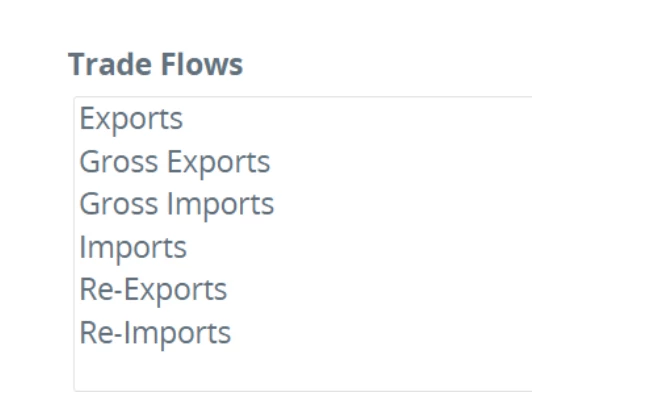This blog is part of a series about WITS, the World Integrated Trade Solution, a collaborative trade data platform developed by the World Bank and other institutions. This is the third installment of the series—for further reading, here are the first, second, and fourth installments.
In the realm of global economics, understanding trade statistics is akin to deciphering a complex puzzle. In our earlier exploration, we delved into the fundamentals of trade measurement, product classifications, and their significance. Now, we embark on a journey to unravel the intricacies of exports, imports, re-exports, re-imports, and tariffs, shedding light on essential nuances that shape international trade dynamics.
Here is a brief (but complete!) glossary that will help you navigate our WITS, the World Integrated Trade Solutions, a collaborative trade data platform developed by the World Bank and other institutions.
Defining the Essentials
According to the United Nations International Merchandise Trade Statistics (IMTS), imports refer to goods that augment a country's material resources, while exports denote goods that diminish said resources by exiting its economic territory.
Additionally, re-exports involve the movement of foreign goods, previously imported, from designated areas to the rest of the world in the same state as before. Conversely, re-imports pertain to the reintroduction of domestically produced goods, previously exported, back into the country.
The complete picture: Gross exports & imports
But the list of terms does not end here. There is a crucial distinction that everyone who analyzes trade data must be aware of: What if we add the word ‘gross’ to exports or imports?
Gross exports encompass both exports and re-exports, offering a comprehensive view of a country's outbound trade activity; while gross imports include all goods entering the country from foreign nations, including those which were re-imported again, allowing a full inbound-looking panoramic photo of a nation’s trade efforts.
When running advanced query on WITS you will surely encounter these variables to filter with, enlarging the picture painted by trade data in specific countries.
Re-imports: Can countries trade with themselves?
One intriguing aspect illuminated by re-imports is the phenomenon of a country engaging in trade with itself. This occurs when domestic goods are re-imported, creating a peculiar scenario where a country appears to both import from and export to itself, highlighting the intricacies of global trade dynamics.
Let us portray this phenomenon with an example: A country, Nation A, exports machinery to Nation B. After some time, Nation B sends the used machinery back to Nation A for refurbishment or repair. This movement of domestically produced machinery back into Nation A's territory is an example re-import.
CIF and FOB: different measures, different results
The disparity between imports reported by one country and exports reported by its trading partner often perplexes analysts.
For instance, when examining China's exports to the United States in 2020—totaling US$452 billion—against the USA's reported imports from China—amounting to $457 billion—a disparity emerges. This incongruity arises from the recording methods employed by different nations. While imports are recorded on a CIF (Cost, Insurance, and Freight) basis, which is inclusive of additional costs, exports are reported FOB (Free on Board), leading to variations of 10 to 20% in reported figures. This is the primary reason but there could be other reasons like misclassification of product.
The European Union's (EU) case: How can an individual member state surpass the total Union's import data?
At times, an individual EU country’s import is more than the EU’s total import. For example, Belgium’s vaccine imports was worth twelve billion dollars while total EU imports of vaccines is around seven billion dollars.
How is this possible? This is because Belgium imports show imports from all countries in the world, including EU countries, while EU imports record only imports with non-EU countries. Trading within the EU is considered intra or domestic trade and is not reflected when recording EU imports.

International trade data serves as a critical barometer of economic activity, guiding policymakers, businesses, and researchers in navigating the complexities of global commerce. By understanding the intricacies of trade statistics, one can glean invaluable insights into market trends, trade imbalances, and emerging opportunities. As we continue to dissect the layers of trade dynamics, a deeper understanding emerges, empowering stakeholders to make informed decisions in an increasingly interconnected world.
Dive into the trade data offered by WITS here. Get more details in the WITS User Manual and/or watch short videos on how to use WITS. Get your trade wits sharpened with WITS!




Join the Conversation